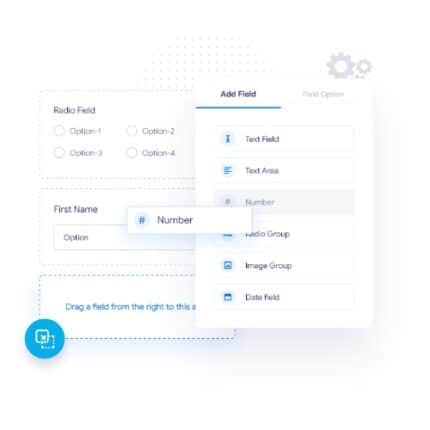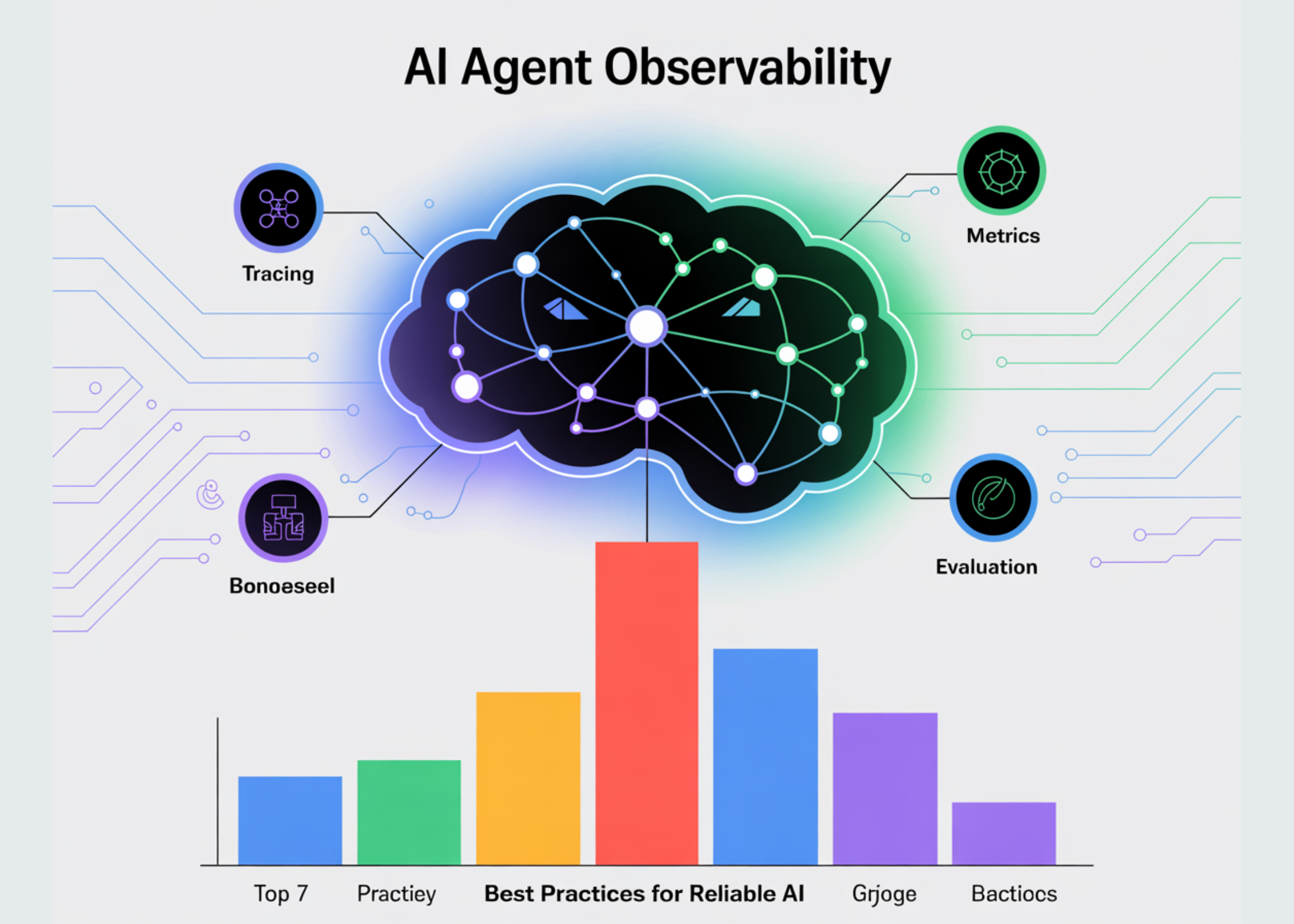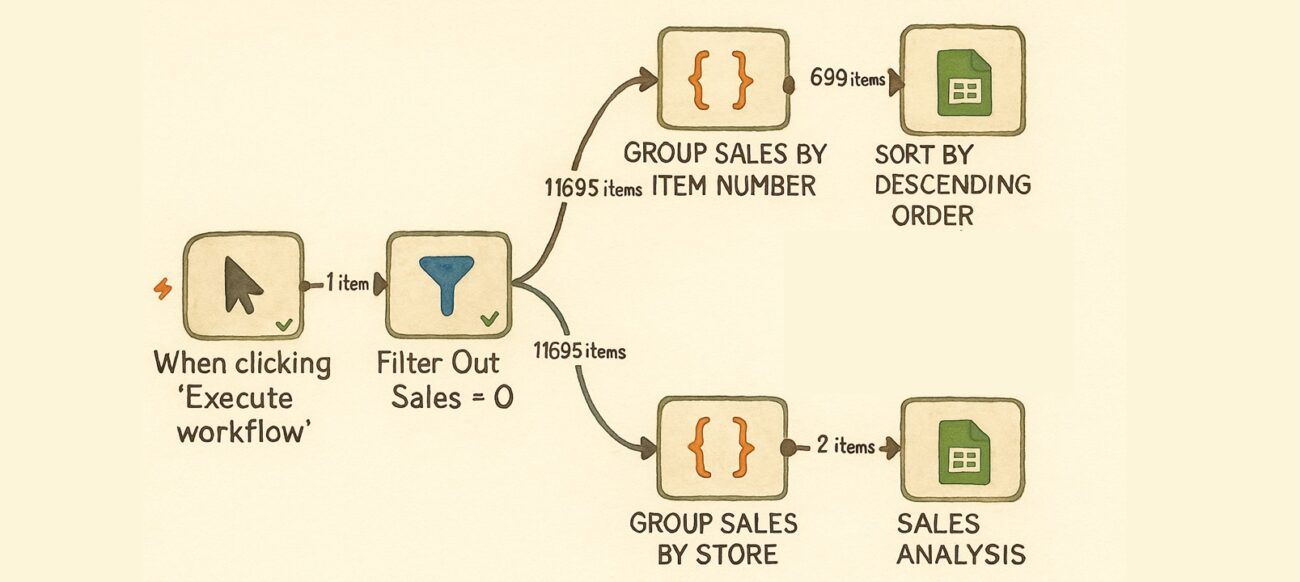Blog
Understanding AI Agent Observability
As organizations increasingly rely on artificial intelligence (AI) to drive decision-making and enhance operational efficiency, the concept of AI agent observability has emerged as a crucial focus. Observability refers to the ability to monitor, assess, and understand the behavior of AI agents and systems. This capability is essential for ensuring that AI functions reliably and effectively.
AI agent observability is not merely about tracking performance metrics; it encompasses a holistic view of the AI’s functioning, including its decision-making processes, potential biases, and overall system health. In this post, we’ll delve into the importance of AI agent observability and outline the top seven best practices to achieve reliable AI performance.
Why AI Agent Observability Matters
The complexities involved in AI systems make observability paramount. When an AI agent functions as intended, it can vastly improve efficiency, uncover insights, and enhance user experiences. However, hidden issues within the system can lead to suboptimal performance, unexpected behaviors, or even ethical dilemmas.
With effective observability, organizations can:
- Identify Anomalies: Rapidly recognize problems before they escalate.
- Enhance Trust: Build confidence among stakeholders by ensuring transparency in AI operations.
- Inform Decisions: Use data-driven insights to refine models and improve outcomes.
Best Practices for AI Agent Observability
To foster a reliable AI deployment, consider the following best practices.
1. Implement Robust Monitoring Tools
Begin by establishing comprehensive monitoring solutions that track the performance metrics of AI agents. Utilize dashboards and data visualization technologies to offer real-time insights into how the AI is performing against set benchmarks. These tools should highlight key indicators, such as response times, accuracy rates, and model drift.
2. Establish Clear Performance Metrics
Defining what success looks like for your AI agents is vital. Develop specific, measurable performance metrics tailored to your use case. Typical metrics include precision, recall, and F1 score. Additionally, consider business-oriented metrics, such as customer satisfaction and return on investment (ROI), to align AI performance with organizational goals.
3. Promote Transparency
Transparency is fundamental in ensuring that AI systems are understandable and accountable. Providing insights into the decision-making processes of AI agents will help users to comprehend how outcomes are derived. This transparency is particularly important in sectors where ethical considerations are critical, such as healthcare and finance.
4. Regularly Test and Validate Models
Continuous testing and validation are essential for maintaining the integrity of AI models. Periodically assess the performance of AI agents using test datasets to identify any shifts in their behavior over time. A/B testing can also be useful to compare the effectiveness of different model versions. This practice helps in maintaining a high standard of performance and addressing any emerging issues swiftly.
5. Address Bias and Fairness
AI systems can inadvertently learn biases present in training data, leading to unfair outcomes. Observability includes actively monitoring for bias, ensuring that the AI agent operates fairly across diverse demographic groups. Incorporate fairness checks into your performance metrics and regularly assess the outcomes to identify and mitigate any unintended biases in AI decisions.
6. Foster Collaboration Across Teams
Encouraging collaboration among data scientists, software engineers, and business stakeholders is essential for effective observability. Create cross-functional teams that can share insights, discuss findings, and implement improvements collaboratively. This approach ensures that all perspectives are considered when monitoring AI performance and provides a well-rounded understanding of the AI’s impact across the organization.
7. Prepare for Continuous Improvement
AI is not static; it requires ongoing refinement. Cultivate a culture of continuous improvement where feedback loops are established to facilitate learning from observed outcomes. Regularly update your monitoring and evaluation frameworks to adapt to changes in technology and business needs. By committing to iterative improvements, organizations can enhance the reliability and effectiveness of their AI systems over time.
Conclusion
AI agent observability is critical to ensuring that artificial intelligence systems perform reliably and ethically in real-world applications. By implementing robust monitoring tools, establishing clear performance metrics, promoting transparency, and addressing bias, organizations can build trust in their AI systems. Additionally, fostering collaboration and committing to continuous improvement will further enhance the effectiveness and reliability of AI deployments.
In an era where AI is increasingly becoming a core element of business strategy, emphasizing observability is not just a technical requirement; it is a strategic necessity for long-term success. Implementing these best practices will equip organizations to leverage the full potential of AI while mitigating risks and building a foundation of trust and reliability in AI-driven decisions.
Elementor Pro
In stock
PixelYourSite Pro
In stock
Rank Math Pro
In stock
Related posts
WooCommerce Floating Cart Plugin | Modern Cart #woocommerce #wordpress
How to Create a Website with MilesWeb’s WordPress AI Website Builder
Google Store Widget Program: Complete 3-Tier Guide for Trust & Sales
How to Reduce KV Cache Bottlenecks with NVIDIA Dynamo
Shopify vs WordPress (2025) — Which is Better?
新手零基础用10Web AI快速搭建WordPress网站!10Web AI建站工具全教程|教你如何克隆复制任何网站做成自己的网页
Hack Club Accuses Slack of Extortionate Pricing in $190K Hike
From Python to JavaScript: A Playbook for Data Analytics in n8n with Code Node Examples
Liquid Glass Design and Advanced AI Enhancements
A pivotal meeting on vaccine guidance is underway—and former CDC leaders are alarmed
Review of GoDaddy WordPress Hosting – The Shocking Truth You NEED to Know Before Buying!
Estela Rueda on revolutionizing WordPress docs with AI
Products
-
 Rayzi : Live streaming, PK Battel, Multi Live, Voice Chat Room, Beauty Filter with Admin Panel
Rayzi : Live streaming, PK Battel, Multi Live, Voice Chat Room, Beauty Filter with Admin Panel
$98.40Original price was: $98.40.$34.44Current price is: $34.44.In stock
-
 Team Showcase – WordPress Plugin
Team Showcase – WordPress Plugin
$53.71Original price was: $53.71.$4.02Current price is: $4.02.In stock
-
 ChatBot for WooCommerce – Retargeting, Exit Intent, Abandoned Cart, Facebook Live Chat – WoowBot
ChatBot for WooCommerce – Retargeting, Exit Intent, Abandoned Cart, Facebook Live Chat – WoowBot
$53.71Original price was: $53.71.$4.02Current price is: $4.02.In stock
-
 FOX – Currency Switcher Professional for WooCommerce
FOX – Currency Switcher Professional for WooCommerce
$41.00Original price was: $41.00.$4.02Current price is: $4.02.In stock
-
 WooCommerce Attach Me!
WooCommerce Attach Me!
$41.00Original price was: $41.00.$4.02Current price is: $4.02.In stock
-
 Magic Post Thumbnail Pro
Magic Post Thumbnail Pro
$53.71Original price was: $53.71.$3.69Current price is: $3.69.In stock
-
 Bus Ticket Booking with Seat Reservation PRO
Bus Ticket Booking with Seat Reservation PRO
$53.71Original price was: $53.71.$4.02Current price is: $4.02.In stock
-
 GiveWP + Addons
GiveWP + Addons
$53.71Original price was: $53.71.$3.85Current price is: $3.85.In stock
-
 ACF Views Pro
ACF Views Pro
$62.73Original price was: $62.73.$3.94Current price is: $3.94.In stock
-
 Kadence Theme Pro
Kadence Theme Pro
$53.71Original price was: $53.71.$3.69Current price is: $3.69.In stock
-
 LoginPress Pro
LoginPress Pro
$53.71Original price was: $53.71.$4.02Current price is: $4.02.In stock
-
 ElementsKit – Addons for Elementor
ElementsKit – Addons for Elementor
$53.71Original price was: $53.71.$4.02Current price is: $4.02.In stock
-
 CartBounty Pro – Save and recover abandoned carts for WooCommerce
CartBounty Pro – Save and recover abandoned carts for WooCommerce
$53.71Original price was: $53.71.$3.94Current price is: $3.94.In stock
-
 Checkout Field Editor and Manager for WooCommerce Pro
Checkout Field Editor and Manager for WooCommerce Pro
$53.71Original price was: $53.71.$3.94Current price is: $3.94.In stock
-
 Social Auto Poster
Social Auto Poster
$53.71Original price was: $53.71.$3.94Current price is: $3.94.In stock
-
 Vitepos Pro
Vitepos Pro
$53.71Original price was: $53.71.$12.30Current price is: $12.30.In stock
-
 Digits : WordPress Mobile Number Signup and Login
Digits : WordPress Mobile Number Signup and Login
$53.71Original price was: $53.71.$3.94Current price is: $3.94.In stock
-
 JetEngine For Elementor
JetEngine For Elementor
$53.71Original price was: $53.71.$3.94Current price is: $3.94.In stock
-
 BookingPress Pro – Appointment Booking plugin
BookingPress Pro – Appointment Booking plugin
$53.71Original price was: $53.71.$3.94Current price is: $3.94.In stock
-
 Polylang Pro
Polylang Pro
$53.71Original price was: $53.71.$3.94Current price is: $3.94.In stock
-
 All-in-One WP Migration Unlimited Extension
All-in-One WP Migration Unlimited Extension
$53.71Original price was: $53.71.$3.94Current price is: $3.94.In stock
-
 Slider Revolution Responsive WordPress Plugin
Slider Revolution Responsive WordPress Plugin
$53.71Original price was: $53.71.$4.51Current price is: $4.51.In stock
-
 Advanced Custom Fields (ACF) Pro
Advanced Custom Fields (ACF) Pro
$53.71Original price was: $53.71.$3.94Current price is: $3.94.In stock
-
 Gillion | Multi-Concept Blog/Magazine & Shop WordPress AMP Theme
Rated 4.60 out of 5
Gillion | Multi-Concept Blog/Magazine & Shop WordPress AMP Theme
Rated 4.60 out of 5$53.71Original price was: $53.71.$5.00Current price is: $5.00.In stock
-
 Eidmart | Digital Marketplace WordPress Theme
Rated 4.70 out of 5
Eidmart | Digital Marketplace WordPress Theme
Rated 4.70 out of 5$53.71Original price was: $53.71.$5.00Current price is: $5.00.In stock
-
 Phox - Hosting WordPress & WHMCS Theme
Rated 4.89 out of 5
Phox - Hosting WordPress & WHMCS Theme
Rated 4.89 out of 5$53.71Original price was: $53.71.$5.17Current price is: $5.17.In stock
-
 Cuinare - Multivendor Restaurant WordPress Theme
Rated 4.14 out of 5
Cuinare - Multivendor Restaurant WordPress Theme
Rated 4.14 out of 5$53.71Original price was: $53.71.$5.17Current price is: $5.17.In stock
-
 Eikra - Education WordPress Theme
Rated 4.60 out of 5
Eikra - Education WordPress Theme
Rated 4.60 out of 5$62.73Original price was: $62.73.$5.08Current price is: $5.08.In stock
-
 Tripgo - Tour Booking WordPress Theme
Rated 5.00 out of 5
Tripgo - Tour Booking WordPress Theme
Rated 5.00 out of 5$53.71Original price was: $53.71.$4.76Current price is: $4.76.In stock
-
 Subhan - Personal Portfolio/CV WordPress Theme
Rated 4.89 out of 5
Subhan - Personal Portfolio/CV WordPress Theme
Rated 4.89 out of 5$53.71Original price was: $53.71.$4.76Current price is: $4.76.In stock


















